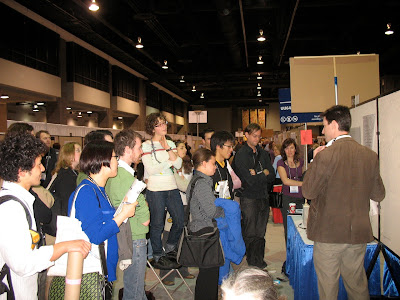Upon reflection, I realized I do love neuroscience, but it is simply impossible to do bench level neuroscience at home. All of my previous homemade neuroscience has consisted of satirical or theoretical writing that did not require any equipment besides a brain and a labtop. So...for this year's Society for Neuroscience meeting, my close friend and colleague Greg Gage and I decided to attempt to do some amateur neuroscience on the cheap, within the budget of a middle class high school student.
I also contacted Kerri Smith, the podcast editor for Nature Magazine, who was attending the conference, and she interviewed us for the Nature Neuroscience Podcast. You can listen to the ~1 hour podcast highlighting research from the whole conference here, or if you just want to listen to our bit, that clip is here (also embedded above). Thanks Kerri!
 Organism of choice, but I am beginning to look into crayfish as well.
Organism of choice, but I am beginning to look into crayfish as well.
 Finishing our presentation the night before at the hotel bar. Our first reviewers were the barflies, and they gave us great advice on the presentation format. That's Greg on the left, me on the right.
Finishing our presentation the night before at the hotel bar. Our first reviewers were the barflies, and they gave us great advice on the presentation format. That's Greg on the left, me on the right.
(satirical poke at overuse of correlation)
SfN 2006 How Many Neurons Must One Man Have, Before You Call Him a Man?
SfN 2007 Cingular Theory of Unification: The Cingulate Cortex Does Everything
(satirical poke at overinterpretation of fMRI mapping data)
The work will appear in a German book, translated in German, in early 2009.
Gage G. Marzullo T. Parikh H. "Die Cinguläre Theorie der Vereinigung: Der Gyrus Cinguli ist Für Alle Geistigen Leistungen Zuständig." in the book "Braintertainment 2.0"
An abridged version also appeared in a recent issue of the Annals of Improbable Research, and you can watch a youtube version of the work.
Enjoy! We encourage any readers out there to tackle issues in their own science field through satire. Sometimes scientists take themselves too seriously in the importance of their results (I sometimes do this as well), and a good-humored joke can spark more serious discussion of the limitations of our tools and methods.















